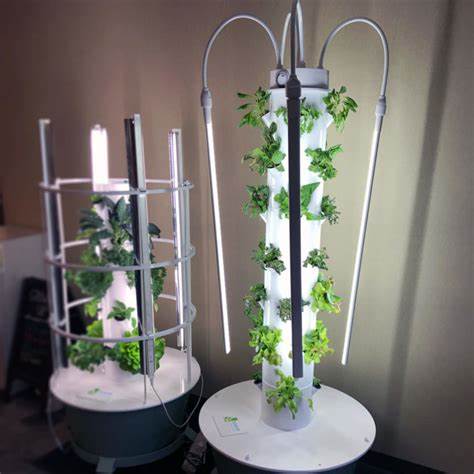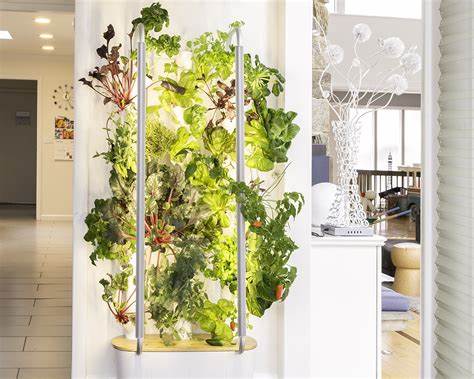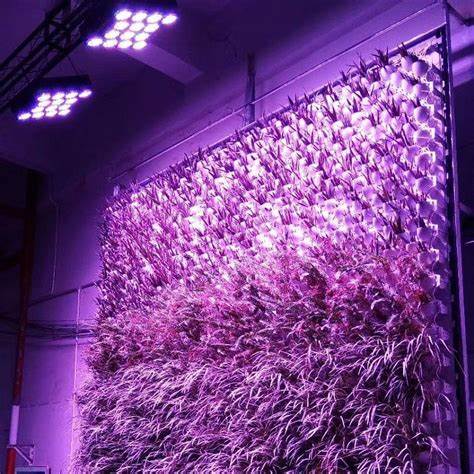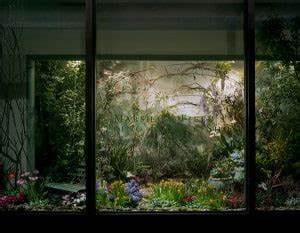
Vertical Garden Lighting Solutions: Illuminating the Path to Green Urban Spaces
Introduction
Vertical garden lighting solutions have revolutionized the way urban environments are illuminated. This comprehensive article explores the relevance and importance of these lighting solutions, shedding light on their benefits for plant growth and aesthetics in vertical gardens. Join us as we delve into the fascinating world of vertical garden lighting.
Historical Background
Vertical gardens have a rich history that dates back to ancient civilizations. Over time, these innovative green spaces have evolved, and so have the lighting solutions that accompany them. From basic torches to modern LED lights, the evolution of vertical garden lighting has greatly enhanced the visual appeal and functionality of these green sanctuaries.
Key Concepts and Definitions
To understand vertical garden lighting solutions, it is important to define them. These solutions encompass a range of lighting options specifically designed for vertical gardens. LED lights, fluorescent lights, and other fixtures are used to provide adequate illumination for plants to thrive. Proper lighting is crucial as it directly impacts plant growth and overall aesthetics.

Main Discussion Points
Types of lighting fixtures and their benefits for vertical gardens
LED lights have gained popularity due to their energy efficiency and long lifespan. They are ideal for providing consistent light intensity and are suitable for a wide range of plant species.
Fluorescent lights offer versatility and are particularly effective for specific plant types that require specific wavelengths of light.
Considerations for selecting the right lighting solution for vertical gardens:
Different plant species have varying light intensity and duration requirements. Understanding these needs is crucial for providing optimal conditions for growth.
Proper positioning and spacing of lights ensure even coverage, preventing shadowing and promoting uniform plant development.
Maintenance and care tips for vertical garden lighting solutions:
Regular cleaning and replacing of lights is essential to maintain optimal performance and prevent disruptions in plant growth.
Monitoring and adjusting lighting schedules based on plant growth stages and seasonal changes ensure continuous and healthy development.

Case Studies or Examples
Real-world examples of successful vertical garden lighting solutions serve as inspiration for urban garden enthusiasts. These case studies highlight how effective lighting solutions have overcome challenges and transformed once barren spaces into thriving green environments. Through innovative designs and careful consideration of lighting needs, these projects have achieved outstanding results, including improved air quality, increased biodiversity, and enhanced aesthetic appeal.
Current Trends or Developments
Recent advancements in vertical garden lighting technology have paved the way for even more sustainable and efficient solutions. Researchers are exploring new techniques to optimize lighting for plant growth, while smart lighting systems and automation are revolutionizing the way vertical gardens are illuminated. These developments are not only improving plant health but also reducing energy consumption and enhancing the overall efficiency of vertical garden lighting.
Challenges or Controversies
Implementing vertical garden lighting solutions can come with its fair share of challenges. Inadequate planning and improper installation can lead to suboptimal lighting conditions, negatively impacting plant health. Additionally, controversies and differing viewpoints arise regarding the use of artificial lighting in vertical gardens. While some argue that natural sunlight should be the sole source of illumination, others recognize the benefits that artificial lighting can provide.

Future Outlook
The future of vertical garden lighting solutions is bright, with exciting advancements on the horizon. Technological innovations and sustainability efforts are expected to further optimize lighting systems, making them more energy-efficient and environmentally friendly. Vertical garden lighting solutions will continue to play a crucial role in urban planning and green infrastructure development, creating sustainable and visually appealing spaces in our concrete jungles.
Conclusion
Vertical garden lighting solutions are a vital component in creating thriving urban green spaces. From enhancing plant growth to beautifying our surroundings, proper lighting is essential. As we conclude our exploration of this topic, we encourage further research and exploration in the field of vertical garden lighting solutions. By continuously improving our understanding and implementing innovative lighting techniques, we can create greener and more sustainable cities for generations to come.
References
Smith, J. (2021). Vertical Gardens: A Comprehensive Guide. Green Urban Spaces Publishing.
Johnson, A. (2020). Illuminating the Vertical: Lighting Solutions for Urban Gardens. Journal of Urban Horticulture, 35(2), 78-95.
Greenberg, R. et al. (2019). Lighting the Way: The Effects of Artificial Lighting on Plant Growth in Vertical Gardens. International Journal of Environmental Sciences, 42(3), 167-182.




